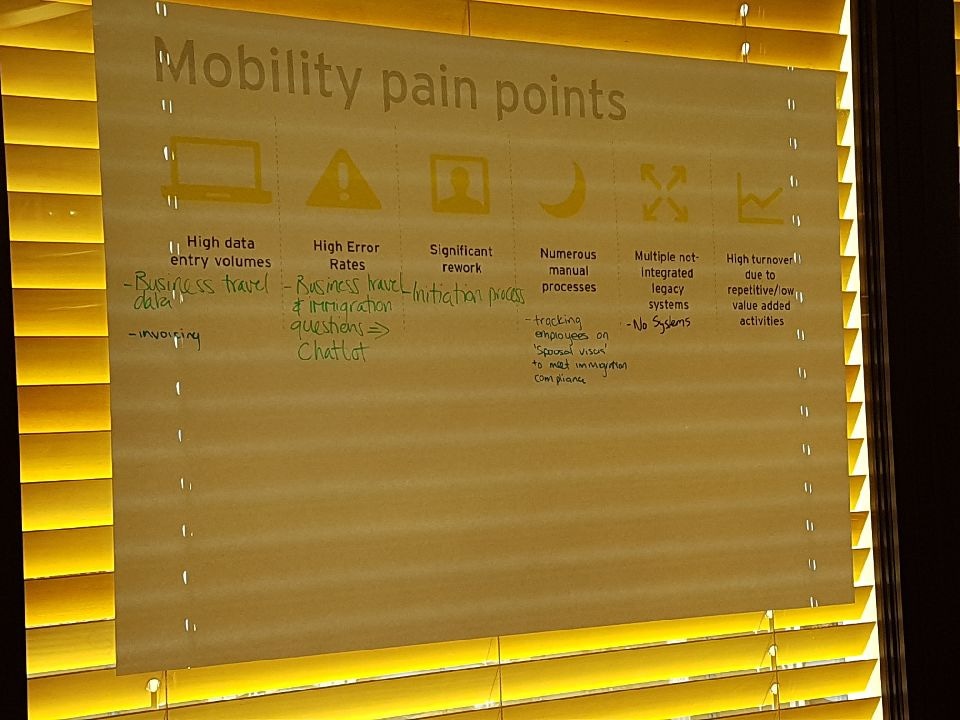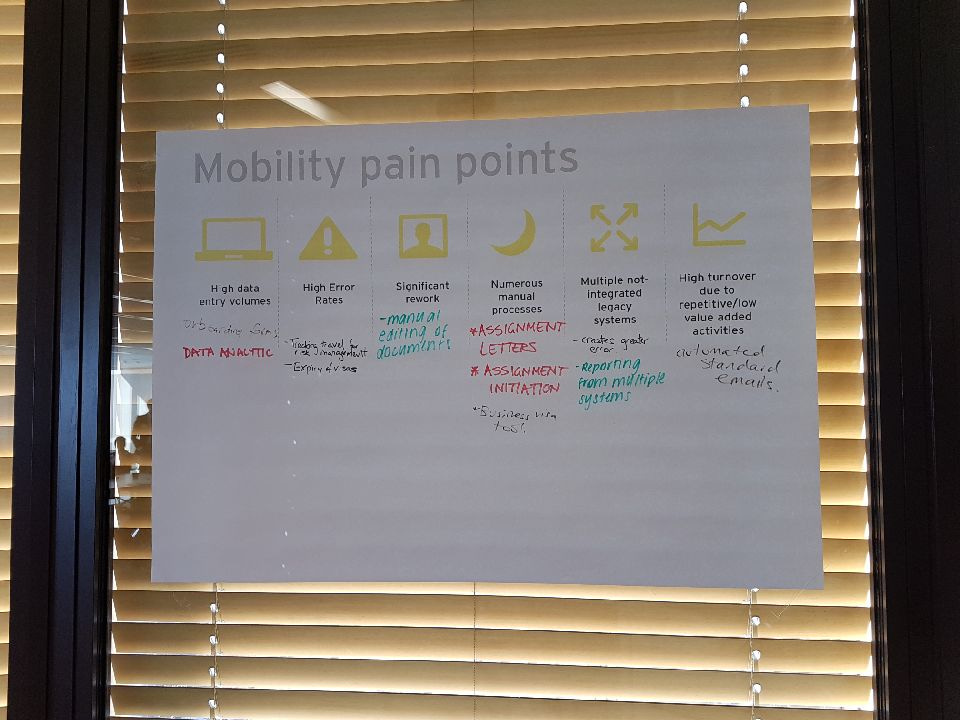Automating Mobility - Unwelcome Disruption or Transformational Opportunity?

Sydney’s Chapter Meeting on the 16th August 2018 was titled “Automating Mobility - Unwelcome Disruption or Transformational Opportunity?" and hosted by EY.

James Ortner and Priscilla Lee from EY explored the concept of process automation or more specifically Intelligent Automation (IA), and how we have already started to see this change in the ways we work. By way of definition:
Intelligent Automation (IA) is the application of smart “software” that can mimic human action, and even human intelligence and learning, to provide increased business value and lower cost. IA encompasses traditional Robotic Process Automation (RPA) as well as more advanced Cognitive Automation (CA),sometimes referred to as Artificial Intelligence (AI).
Case study examples of how businesses are already looking into automation and it’s potential to improve margin, enhance service quality and free up their people to focus on higher value added tasks were shared.
Priscilla shared her considerable experience in overseeing global reporting, analytics and tax mobility processes and shared her thoughts on her recent role leading the design and implementation of automated mobility solutions to drive efficiencies across mobility programs.
The room was then invited to workshop some mobility pain points - see images below.


In summary, there was a general consensus that automating existing high-volume, manual mobility processes and tasks would free up mobility professionals:
- The “robots” can capture and interpret data across mobility, vendor, HR and finance systems, trigger responses and communicate with assignees and other systems
- The “robots” can connect multiple systems without changing existing IT environment
- These “robots” have been proven to be faster, more accurate and consistent and less costly than humans, when implemented and monitored effectively
Want to know more about the Sydney Chapter Meeting or receive updates on future events? Please email Aysegul Kayahan





Please sign in
Sign in OR sign up to become a registered The Forum for Expatriate Management website user
Subscribe here